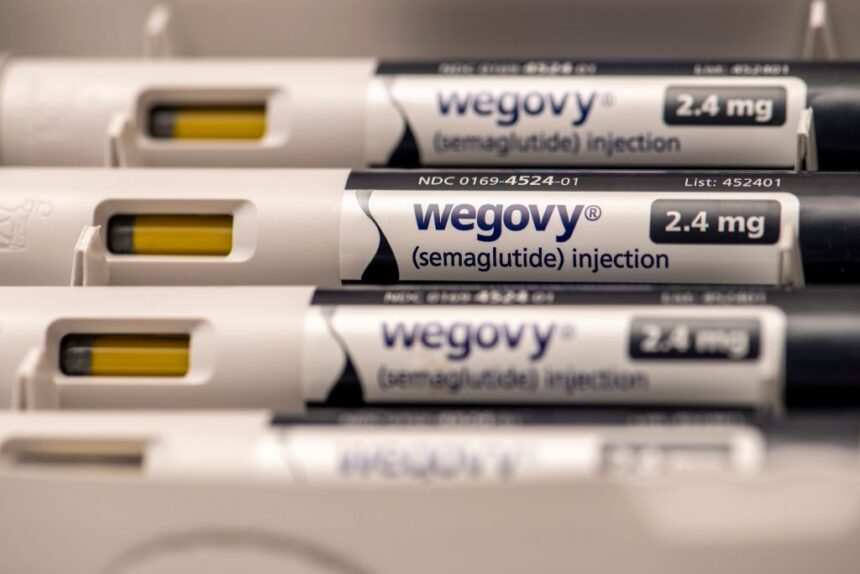Not surprisingly, given the massive popularity of the obesity wunderkinds sold by Novo Nordisk and Eli Lilly, major competition is brewing. In fact, analysts say the obesity drug market is about to get a lot more crowded, with more than a dozen new therapies poised to launch by decade’s end.
Encouraged by the blockbuster debuts of Novo’s Wegovy in 2021 and Lilly’s Mounjaro in 2022 (the drug was subsequently approved for weight loss as Zepbound), pharma companies are vying to launch several alternative treatments, adding to a drug market which is expected to be the largest in pharma history.
These span both new combination injectable therapies, along with oral, small-molecule drugs, and both within and beyond the GLP-1 receptor agonist class. One analyst predicts a total of 13 new offerings on tap over the next five years.
“Starting in 2024, significant increases in the number of launches are expected per year, culminating in a peak of four launches in both 2027 and 2028,” wrote GlobalData pharma analyst Jasper Morley in a note this month.
That’s a 333% increase versus the three launches over the preceding five-year period (2019-2023), Morley pointed out.
Six of the upcoming launches are due to come from Novo, he added, as the Danish firm looks to cement its first-mover advantage. First on deck is lead pipeline asset CagriSema, a combination injectable therapy currently in Phase 3 for obesity that’s expected to reach market next year and reach annual sales of $7.4 billion by 2029, according to GlobalData.
Lilly is also developing a combo drug, retatrutide or GGG, with Phase 3 results due in the second half of 2025. And Lilly’s oral GLP-1, orforglipron, is expected to hit pharmacy shelves in late 2026.
A host of other companies are currently angling for a chunk of this sector or debating entry. Among potential big pharma players, AstraZeneca last year said it bought the rights to a once-daily oral GLP-1 drug candidate from Eccogene for $185 million upfront.
And this year, Roche announced its intent to acquire Carmot Therapeutics for $2.7 billion. Carmot’s incretin franchise includes three GLP-1 analogues in advanced clinical trials, one of which is a once-daily oral, small molecule.
Both the AZ and Roche deals highlight the potential for orals to expand the market through broader adoption and commercialization that’s free of manufacturing constraints, a problem which has led to major supply issues for most if not all of the injectable GLP-1s.
Their big biotech cousin Amgen is hedging its obesity bets, developing both oral (AMG 786) and multispecific (AMG 133) products. Pfizer is another interested party, although it scaled back its obesity ambitions late last year due to disappointing trial data.
Then there are a host of emerging players with traditional GLP-1 and novel mechanisms. Structure Therapeutics is developing an oral GLP-1 receptor agonist, although recent results showed its GSBR-1290 didn’t quite equal the performance of Lilly’s orforglipron. Viking Therapeutics said results from an early-stage study of its obesity pill showed a 3.3% placebo-adjusted average weight loss after four weeks.
While the early-stage pipeline includes dozens of small molecules, Novo and Lilly are likely to hold onto their front-runner status, analysts say. But the market will undoubtedly continue to grow, driven by future trial results, broader access and new introductions.
The ever-expanding target population underscores the potential for drugmakers. A 2020 Centers for Disease Control and Prevention survey showed that about 42% of U.S. adults in 2017-2018 were obese, up from 31% in 1999, with another 31% qualifying as overweight.
A 2017-2018 population of 326 million people equates to 104 million obese and 75 million overweight U.S. adults at the time. Not only have these rates most likely increased, but another study projects the U.S. obesity rate will climb to 50% by 2030.
Per GlobalData’s estimate, the GLP-1 agonist market is set to become the biggest drug class by sales this year and will grow at a 19.2% compound annual growth rate, to $105 billion, by 2029.
Sales of the GLP-1+ market will eventually grow to $158 billion, according to a Leerink Healthcare Team report published last year.
“Recent blockbuster launches have showcased the viability of obesity drugs, encouraging drug developers to commercialize their products,” Morley concluded. “In accordance with the increasing patient population, it is highly likely that a number of companies manufacturing these later entrants will receive great returns for their efforts.”







